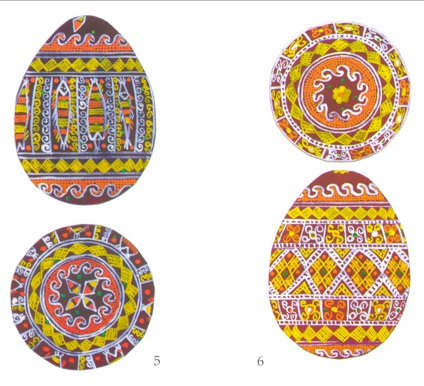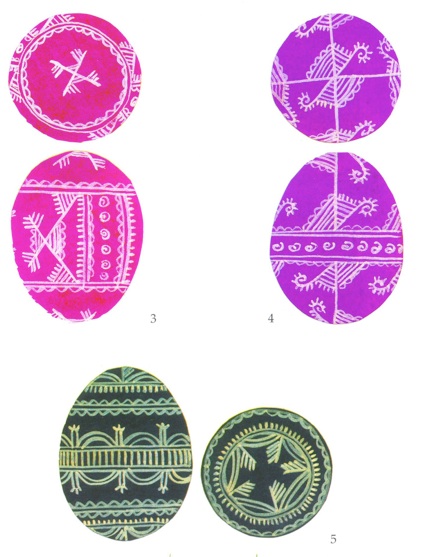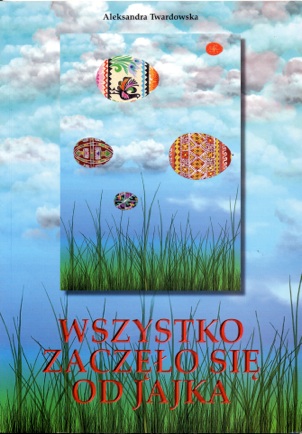
Wsyzstko Zaczęło Się od Jajka
(Everything Begins with an Egg)
Author: Alexandra Twardowska
Edition: 1st
Format: paperback
Pages: 75
Language: Polish
Illustrations: numerous, including 28 color plates
Publisher: Muzeum Archeologiczne i Etnograficzne w Łodźi (Łodź, 1998)
Availability: unknown, suspect out of print
Acquired: Polish Arts Center (Hamtramck, MI)
My limited knowledge of Polish renders me incapable of properly critiquing this book, and Babelfish does not yet include Polish translation1. I have not read the entire book, only skimmed the text and looked at the illustrations. There are three chapters of text:
1. Symbolism of the egg: Why do we make pisanki?
2. Methods of decorating eggs
3. Today’s pisanki
These sections both have small paintings of decorated eggs, and photos of pisanka-making and Polish Easter traditions. This is followed by a set of color plates (painted) of pisanki and other decorated eggs from the various regions of Poland. (I have found this oddity in Ukrainian books as well–lots of photos, but not of the eggs themselves. Those are rendered in paintings. I simply do not understand it.)
Oddly enough, according to my translations, many of these “Polish” regions are actually in Ukraine, as the book features pisanki from the Hutsuls and Volyn: there are also pisanki from ethnographically Ukrainian areas that straddle the Polish-Ukrainian border. Are these simply errors........or imperialistic tendencies?
Below is a plate from the book depicting Polish pisanki from the “Hucul” region; they are actually quite obviously Ukrainian pysanky from the Hutsul region, of the Kosmach style.

Plate: Hucul (Hutsul) “Pisanki”
There are plates of actual Polish pisanki, like the ones below from Opoczno. Of the 43 wax resist eggs pictured, 14 are obviously Ukrainian (Hutsul and Volynian), and several others are suspect.

Plate: Actual Polish Pisanki from Opoczno
The plates also include depictions of other forms of Polish egg decoration, including scratch-carve, and naklejanki/nalepianki made with bulrush pith and paper cut-work.
It’s a nice little book, but more of a museum monograph than a popular publication. It is printed on high-quality paper and the graphics are very good, although, as I noted, there are painting of the eggs instead of photos. I suspect it is probably out of print.
__________
-
1.There are several lovely Ukrainian dictionaries available on-line, but, until quite recently, I’ve had no luck with Polish. Google Translate does a reasonably good job of translating Polish words and phrases, although it will skip over words not in its database. I have trouble, though, typing in all those odd little marks they put on their letters.
Back to MAIN Slavic Books home page.
Back to MAIN Books home page.
Back to Pysanka Bibliography.
Search my site with Google




